Have you ever looked at a piece of vintage china and noticed a network of thin cracks? Not cracks that go all the way through the piece, cracks on the surface only. Those fine cracks are called “crazing.” A true crack through the ceramic that can be felt on both sides of a piece. Crazing on vintage china is only on the outside layer, is difficult to feel and does not effect the stability of the piece like a crack that goes all the way through does. But it does render it “for display only.”
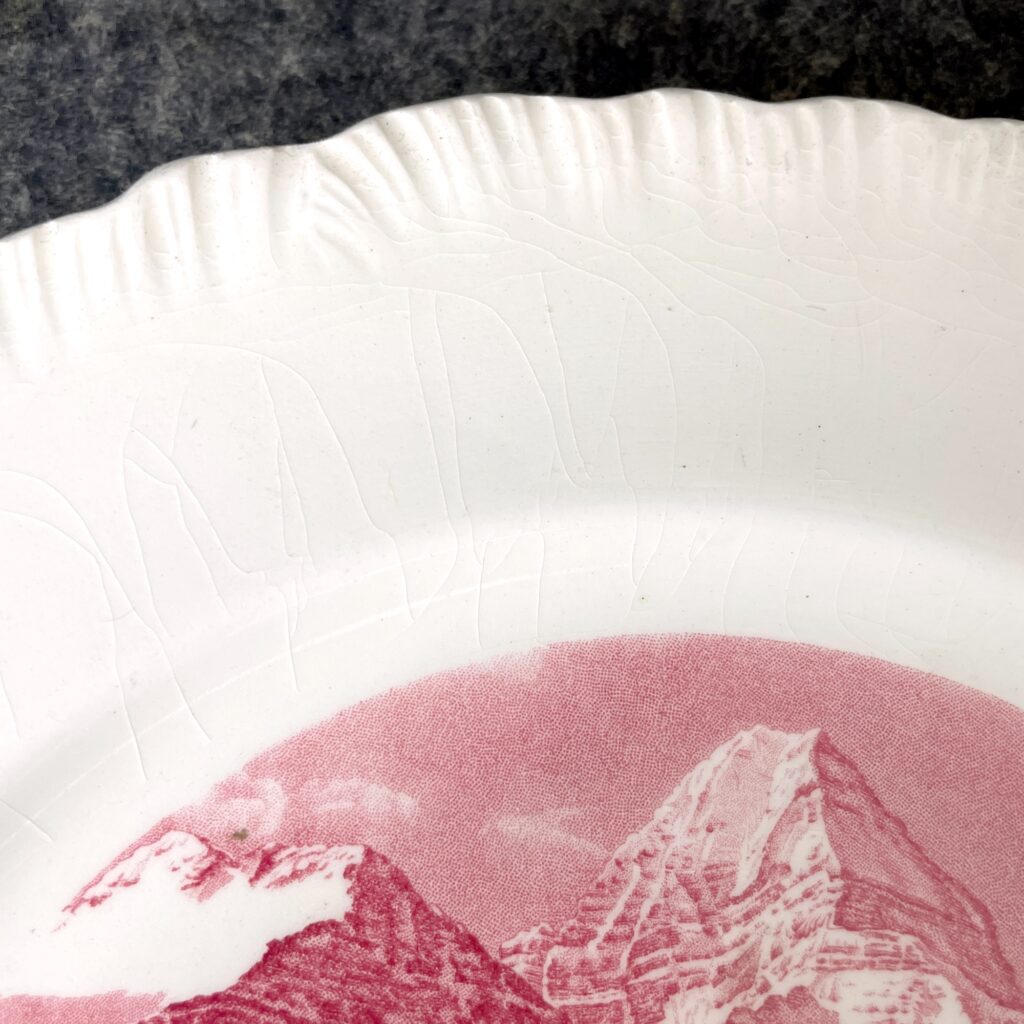
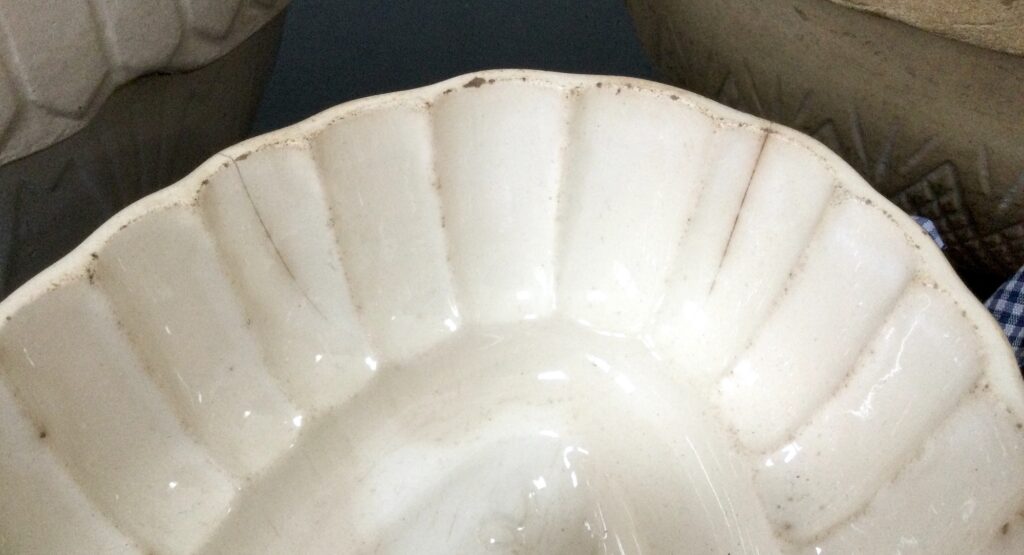
Should you eat on crazed china?
Nope. Here’s why: when china is made, the piece is decorated and then a clear coat glaze is put over the whole piece. Paints used to decorate china, particularly vintage and antique china, can contain toxic elements like lead and cadmium. The clear coat glaze seals those elements in and makes the piece safe to use. Crazing cracks are in that protective clear coat, making it possible for the toxins underneath to leach out.
What causes crazing?
It has to do with tension between the piece and the clear glaze. If the thin layer of glaze contracts more than the piece itself when it’s fired and cooling, crazing can happen. Temperature and moisture can cause it to happen as well, meaning the dishwasher is not a hospitable environment for fine china.
Crazing doesn’t always happen right after the piece is made, it can be years or decades before it occurs.
The value of the china doesn’t determine whether it will craze or not. We’ve seen crazing on vintage china from high quality expensive makers and seen decades old supermarket china still in mint condition. (The only brand of china that I can’t remember ever seeing crazing on is Lenox. But that is absolutely anecdotal info and not an endorsement.)
What’s the difference between crazing and crackles?
Some dinnerware pieces, like Simon Pearce Belmont Celedon Crackle, are intentionally made with fine crackling in the glaze. These pieces are perfectly safe to use.
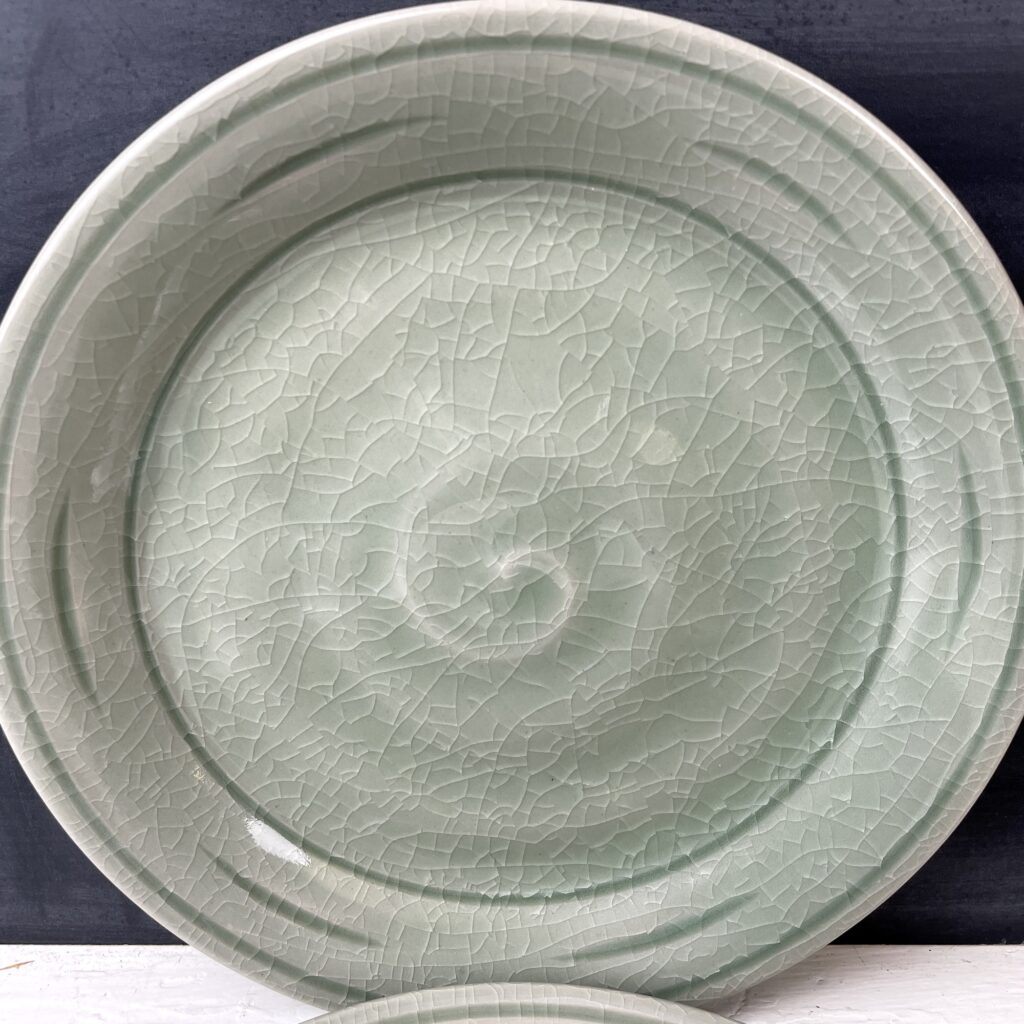
What do you do with crazed china?
Crazing on china can give it character, particularly on older pieces. There is a lot of antique crazed china on the vintage market, but those pieces are being sold for decorative purposes only. Antique ironstone and transferware are popular decor items, crazed or not. I have a set of vintage Johnson Brothers Friendly Village with crazing that are trotted out as Thanksgiving decor.
But what do you do with less decorative or more recent china that someone would expect to use on their table? What you should not do is donate it. If you’re not going to display it or create with it, it should be disposed of. Harsh, I know. You can also offer it to artists on sites like Facebook marketplace, but you should be clear that it’s not meant to be used as dinnerware anymore. We’ve disposed of entire sets of mid century china what was barely used because of crazing and it is a painful experience. But if it’s not safe for you to use, it’s not safe for other people to use either.
How do you clean crazed china?
Gently, with as little moisture as possible. Don’t submerge it. Water gets through the cracks and can stain the piece.
If you have a piece that’s stained and you don’t find it aesthetically pleasing, The Vintage Teacup has an excellent tutorial on how to lighten those stains.
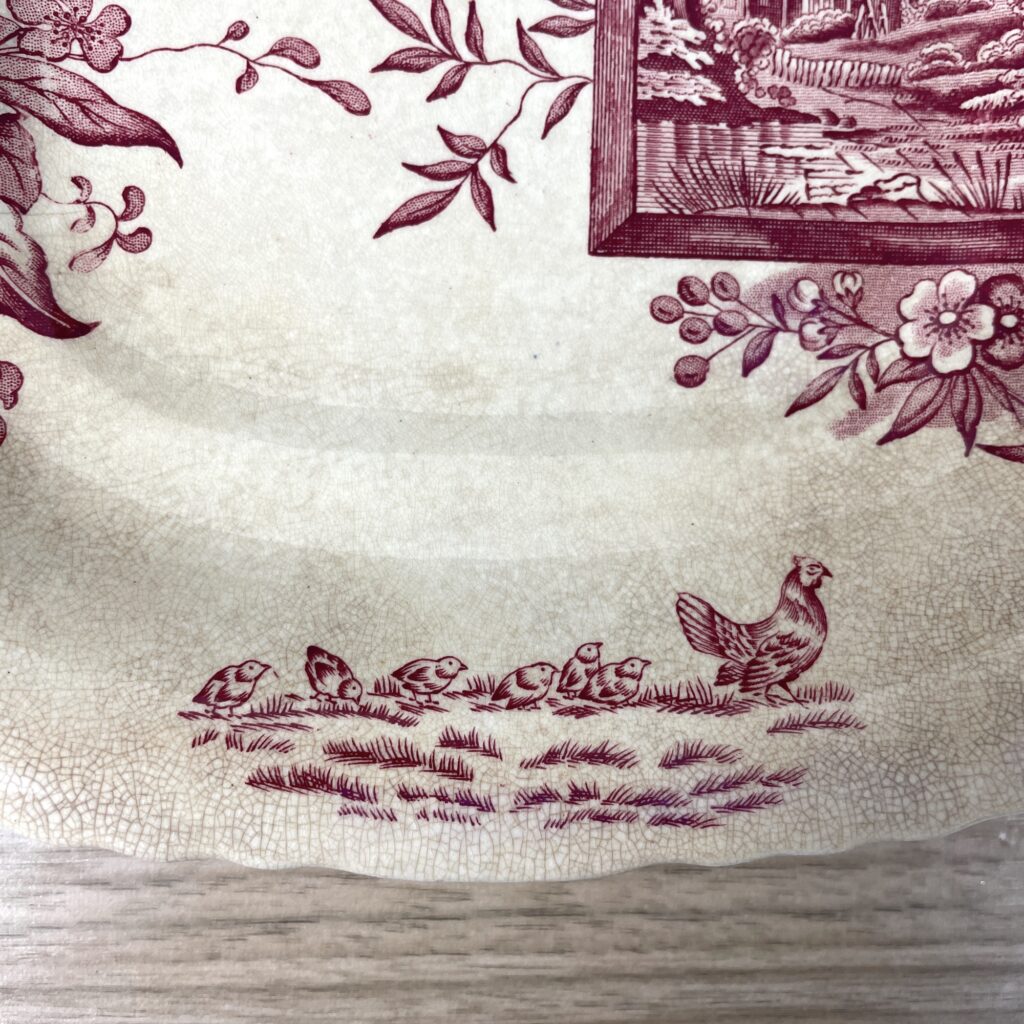
What about other ceramic pieces with crazing?
If there is crazing on vases, lamps, souvenirs or anything else ceramic that you don’t eat on, it’s only an aesthetic problem. And that’s only if it bothers you. If there’s crazing inside a vase, filling it with water is going to lead to staining, but other than that, you can happily decorate with those pieces.
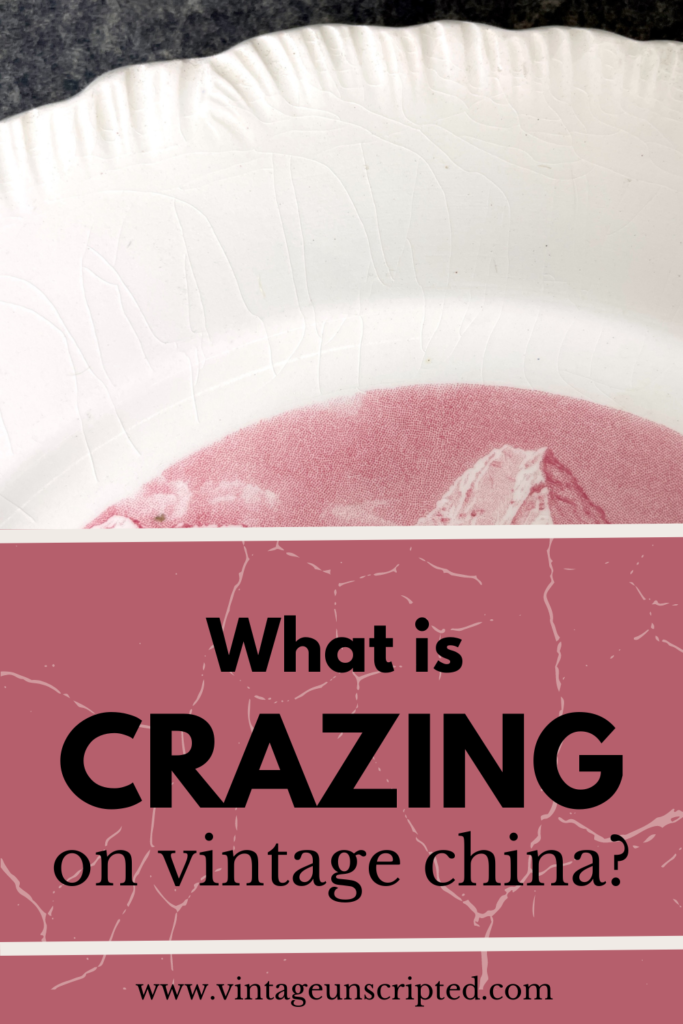

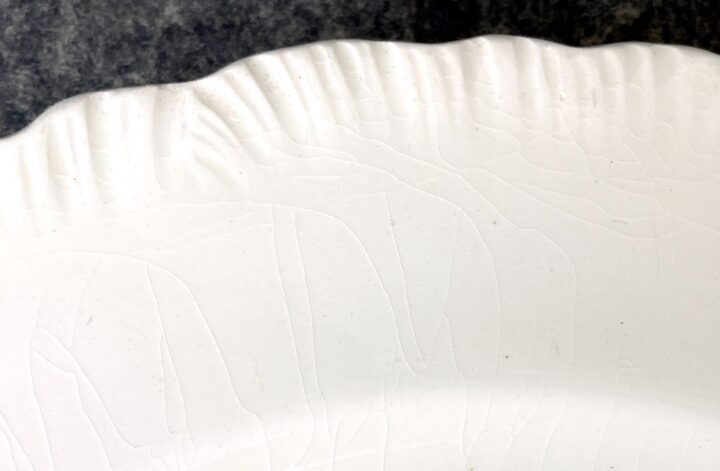

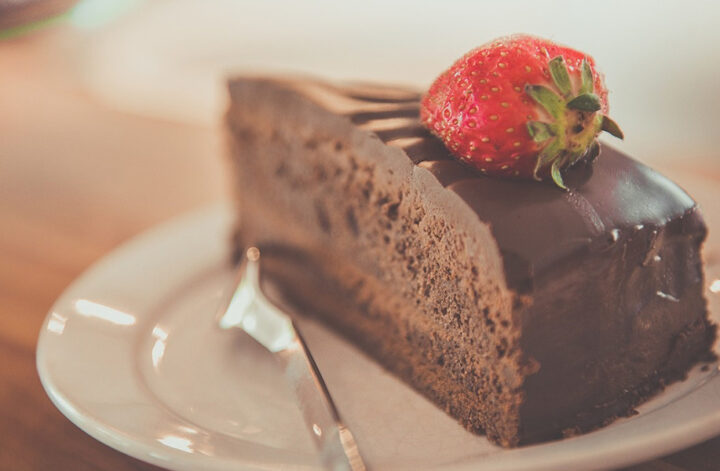


1 comment
Thank you. Very informative.